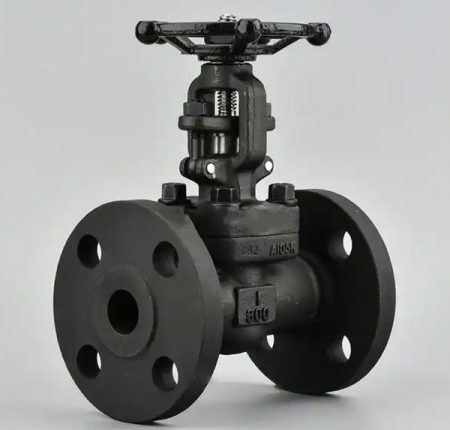
Choosing between API 602 and API 600 gate valves depends on what the system needs. API 600 valves are better for bigger sizes and high-pressure systems. API 602 valves fit small spaces and work with medium pressures. The material you pick is important. Cast steel is good for API 600. Forged steel makes API 602 stronger. API 600 valves usually cost more because they are bigger and need more care. Sometimes, engineers also look at butterfly valves, ball valves, or control valves for special jobs.
Key Takeaways
- API 600 valves work well in big pipelines. They handle high pressure and heat. API 602 valves fit in small spaces. They work with medium or high pressure.
- API 600 valves are made from cast steel. They have thick walls for strength. API 602 valves use forged steel. This makes them strong and small.
- API 600 valves have metal-to-metal seats. These seats are good for hard jobs. API 602 valves have soft seats. Soft seats help stop leaks in sensitive systems.
- You need more space to install API 600 valves. You also need heavy tools. API 602 valves are easier to put in tight spots.
- API 600 valves cost more because they are bigger. They also use more material. API 602 valves cost less in small systems. They are still strong and last long.
- Both valves need regular care to stay safe. API 600 valves need more checks. API 602 valves do not need as much care.
- Always pick the right valve size and pressure rating. Make sure the material fits your system. This keeps things safe and working well.
- Picking the right valve saves money. It helps stop leaks. It also keeps your system running smoothly.
API 602 vs API 600
Comparison Table
| Feature | API 600 Gate Valves | API 602 Gate Valves |
|---|---|---|
| Size Range | 2″ to 60″ (up to 72″ for some designs) | ?” to 4″ |
| Pressure Rating | ANSI Classes 150 to 2500 | Classes 150, 300, 600, 800, 1500, up to 2500 |
| Construction | Cast body, bolted bonnet | Forged body, compact design |
| Material | Cast carbon, stainless, alloy steels | Forged carbon, stainless, alloy steels |
| End Connections | Flanged, butt weld | Threaded, socket weld, flanged |
| Application | Large pipelines, refining, petrochemical | Power plants, skid units, compact piping |
| Maintenance Access | Easier due to large bonnet openings | More compact, slightly more complex |
| Space Requirements | Needs more space | Fits confined spaces |
| Cost | Higher for larger valves | Lower for smaller units |
| Durability | High strength, possible casting defects | More durable, handles pressure changes well |
| Sealing | Metal-to-metal contact | Resilient sealing, better leak prevention |
| Installation | Complex, needs large space | Easier, compact size |
| Lifespan | Long, needs periodic checks | Longer due to forged construction |
| Energy Efficiency | Higher energy use for large flow | Efficient for small, high-pressure systems |
Tip: Always check the size and pressure rating before picking a valve. The right valve can help you save space. It can also save money and time spent on fixing things.
Key Differences
API 602 and API 600 gate valves are not the same. Their design, use, and how they work are different. API 600 valves are used for big pipelines in factories. They control lots of flow and use strong cast steel. These valves start at 2 inches and go up to 60 inches. Most API 600 valves have a bolted bonnet. This makes fixing them easier, but they need more room. API 600 valves can handle many pressure levels. They work from ANSI Class 150 up to 2500. This means they are good for places with high pressure and heat.
API 602 valves are made for small and tight spaces. They work well in high-pressure systems. Their size is much smaller, from ? inch to 4 inches. API 602 valves are made with forged steel. This makes them tough and stops rust. These valves fit into small places like skid units or tight pipes. API 602 valves often have threaded or socket weld ends. This makes them easy to put in small areas. Their sealing is strong and helps stop leaks.
Engineers pick API 602 when space and weight are important. Offshore oil platforms and chemical systems use these valves. They are small and seal well. API 600 valves are used in big pipelines, tanks, and reactors. These places need full flow and different materials.
Cost is important when choosing a valve. API 600 valves cost more because they are bigger and harder to make. API 602 valves cost less for small jobs. But their special design and materials can make them pricey for their size. When engineers compare API 602 and API 600, they look at cost, fixing needs, and energy use. API 602 valves last longer and need less fixing because they are forged.
API 600
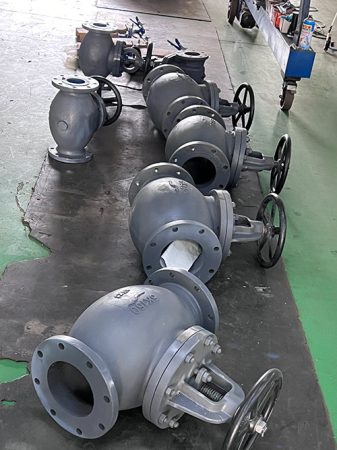
Overview
API 600 is a rule for steel gate valves in oil and gas. The American Petroleum Institute made this rule to keep valves safe and high quality. API 600 talks about bolted bonnet steel gate valves for tough jobs. These valves work where full port openings and thick walls are needed. They also have big stem diameters. This rule is for valves from 1 inch to 24 inches. It covers pressure classes from 150 to 2500. API 600 explains how to design, what materials to use, and what trim to pick. There are tests like shell tests and closure tightness tests. These tests help make sure the valves work well and last long.
Note: API 600 valves are made for safety and good work in hot places and high-pressure pipes.
Features
API 600 steel gate valves are strong and work well. The table below shows what makes them different from other valves:
| Design Feature | API 600 Gate Valves | Other Valve Types |
|---|---|---|
| Wall Thickness | Thicker walls for strength and pressure handling | Standard or thinner walls |
| Material | Forged, carbon, stainless, or alloy steel for durability | General materials |
| Sealing Mechanism | Tight sealing to reduce leaks and emissions | Less focus on low emissions |
| Compliance | Meets strict API 600 standards and testing | Varies by type |
| Application | Heavy-duty, high-pressure, high-temperature environments | General flow control |
| Structural Design | Gate design for strength and reliability | Quick operation (ball valves) |
| Emission Performance | Low emissions required | Not always required |
| Size Range | 1 to 24 inches (NPS) | Varies |
These valves have a bolted bonnet and a rising stem. This makes it easy to check and fix them. API 600 valves often have flanged or butt-welded ends. They use metal seats and special trim for hot jobs. Thick walls and strong steel help these valves last a long time. They work well even when things get tough.
Applications
Engineers use API 600 steel gate valves in hard jobs. These valves control flow in oil refineries, chemical plants, and power stations. They work in high-pressure pipes and hot places where safety is important. API 600 valves are also used in big systems that need to shut off flow with little leaking. The rules for trim and materials help stop rust and damage. Many industries pick API 600 valves because they last long and work the same every time.
Tip: If you need a valve for hot jobs, API 600 is a good choice because it is strong and works well.
API 602
Overview
API 602 is a rule for small steel gate, globe, and check valves. The American Petroleum Institute made this rule for oil and gas jobs. API 602 explains how to design and build these valves. It also covers what materials to use and how to test them. The rule talks about pressure and temperature ratings too. API 602 points to other rules that help make valves better. These valves must follow strict safety and quality rules. They work well when you need a valve that shuts off flow and is easy to fix. API 602 is for small, tough valves that fit in tight spots.
Features
API 602 steel gate valves have many good features. Makers use forged steel to build these valves. Forged steel makes the valves strong and helps stop rust. The small shape lets the valves fit in places with little space. API 602 valves are usually between ? inch and 4 inches. They can handle medium to high pressure in many jobs. The ends can be threaded, socket weld, or flanged. This makes putting them in fast and simple.
The trim uses special stuff to handle different liquids and heat. Trim parts are the seat, disc, and stem. These parts must not wear out or rust fast. This keeps the valve working well. API 602 valves seal tight to stop leaks. The design helps keep the valve good and means you do not fix it often. Many engineers pick API 602 valves because they last long and do not need much care.
Note: API 602 valves are strong, small, and high quality for hard jobs.
Applications
Engineers use API 602 steel gate valves in many places. These valves are found in skid packages and chemical injection units. They are also used in small process systems. Their small size and strong build make them great for tight spaces. API 602 valves control flow in power plants and refineries. They are also used on offshore platforms. These valves work well where you need to stop rust. They can handle oil, gas, and chemicals.
API 602 valves help keep valves safe and good in factories. Special trim lets the valves work with many fluids. Engineers choose these valves for shutoff and easy setup. The small size and strong steel make API 602 valves a smart pick for new systems.
Comparison
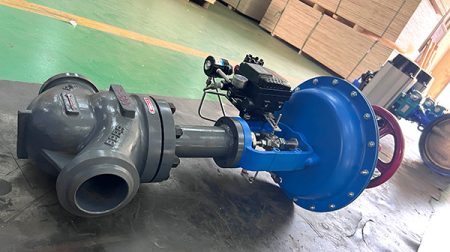
Design
Body Construction
Engineers check body construction first when looking at API 602 and API 600 gate valves. API 600 steel gate valves have a cast steel body. This gives thick walls and strong support. These valves work well in high-pressure pipelines. The cast body can handle high temperatures and tough jobs. API 602 gate valves use forged steel. Forged steel makes the valve small and strong. The compact shape fits tight spaces and small systems. API 602 valves are good for isolating flow in smaller lines. Both valve types need strict testing and inspection for safety.
| Aspect | API 600 | API 602 |
|---|---|---|
| Body Construction | Cast steel, heavy wall | Forged steel, compact |
| Wall Thickness | Thick for high-pressure pipelines | Thin for space-saving |
| Application | Large, high-pressure, high-temp systems | Small, moderate pressure, tight spaces |
Tip: Forged steel in API 602 valves helps stop leaks and backflow in small systems.
Bonnet Type
Bonnet type changes how easy it is to fix and isolate the valve. API 600 gate valves have a bolted bonnet. This makes testing and fixing simple. The bolted bonnet works well in hot places and helps with repairs. API 602 steel gate valves use welded or bolted bonnets. Welded bonnets save space and cost less. Bolted bonnets in API 602 help stop backflow and isolate flow. Both bonnet types must meet safety rules.
Size Range
Size range is a big difference in steel gate valves. API 600 valves start at 2 inches and go up to 60 inches. These valves control flow in big pipelines. API 602 valves are from ? inch to 4 inches. The small size fits skid packages and chemical injection units. Engineers pick API 602 for tight spaces and moderate flow. API 600 valves are best for high-pressure pipelines and mainline isolation.
| Valve Standard | Size Range | Typical Use |
|---|---|---|
| API 600 | 2″ to 60″ | Large, high-pressure pipelines |
| API 602 | ?” to 4″ | Small, compact process systems |
Note: Always match valve size to what your system needs for safety.
Pressure Rating
Pressure rating tells how much force a valve can take. API 600 steel gate valves have ratings from Class 150 to 2500. These ratings make API 600 valves good for high-pressure pipelines and hot jobs. API 602 gate valves have ratings from Class 150 to 1500. The lower rating fits moderate service and smaller lines. Both valve types need testing and inspection to check pressure rating and safety.
| Valve Standard | Typical Pressure Rating (psi) | Application Scope |
|---|---|---|
| API 600 | 150 to 2500 | Heavy-duty, high-pressure |
| API 602 | 150 to 1500 | Moderate pressure, compact |
API 600 valves handle tough jobs and high heat. API 602 valves work best in moderate pressure and temperature. Engineers must check pressure rating before picking a valve for flow control or isolation.
Tip: Higher pressure rating means higher cost and stricter material needs. Always think about cost, materials, and trim when picking steel gate valves.
Material
Engineers pick materials for steel gate valves by the job. API 600 valves use strong materials for high pressure and heat. Most API 600 valves have carbon steel bodies with thick walls. Thick walls help them last longer in tough places. Valve standards tell what materials are safe and good.
API 602 valves use forged steel for strength. ASTM A105N forged carbon steel is used a lot for API 602 valves. These valves also use alloys, stainless steel, and rare metals. Forged steel makes API 602 valves small and tough. Engineers pick these materials to stop rust and damage in small, high-pressure systems.
- API 600 steel gate valves:
- Carbon steel body with thick walls
- Made for hard, high-pressure jobs
- Follows strict rules for safety
- API 602 steel gate valves:
- ASTM A105N forged carbon steel body
- Uses alloys and stainless steel
- Small and strong for tight spaces
Testing checks that both valve types meet quality rules. Engineers use these checks to make sure valves work well.
Note: The material you choose changes how long valves last. It also affects safety and how well they work. Always pick the right material and follow the rules.
Sealing
Sealing in steel gate valves stops leaks and keeps things safe. API 600 valves use metal-to-metal seats. This works well for high pressure and heat. Metal seats, sometimes coated with Stellite, are fire-safe. These valves can handle very hot jobs, up to 1,000°F.
API 602 valves use soft seats. Engineers use elastomer or PTFE for these seats. Soft seats help stop leaks and lower emissions. API 602 valves work best in medium pressure and heat. These valves are good for hydrogen or toxic gases.
| Feature | API 600 Gate Valves | API 602 Gate Valves |
|---|---|---|
| Sealing Mechanism | Metal-to-metal seating, fire-safe | Resilient seating (elastomer/PTFE), leak prevention |
| Pressure/Temp | Up to 2,500 psi, 1,000°F | Up to 1,500 psi, 300°C |
| Application | Extreme conditions, fire scenarios | Leak-sensitive, emission control |
Testing checks the sealing to make sure valves are safe. Engineers look for leaks before putting valves in place.
Tip: Pick the sealing that fits your system. Metal seats are best for high pressure. Soft seats are better for stopping leaks.
Installation
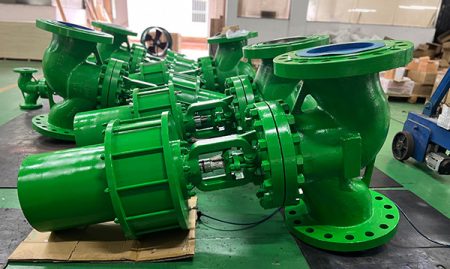
How you install steel gate valves depends on size and design. API 600 valves are big and heavy. Engineers need lots of space and special tools to put them in. Flanged or butt-welded ends make them secure but need careful lining up. API 600 valves often need cranes or lifts to move them.
API 602 valves are small and light. Engineers put these valves in tight spots using threaded, socket weld, or flanged ends. Their small size makes them easy to install fast. Workers can fit API 602 valves by hand. No heavy tools are needed. These valves are good for skid packages and small systems.
- API 600 installation:
- Needs lots of space and heavy tools
- Flanged or butt-welded ends
- Careful lining up needed
- API 602 installation:
- Fits tight spots
- Threaded, socket weld, or flanged ends
- Fast and easy to set up
Testing after installation checks that valves work right. Engineers look at lining up, sealing, and how the valve works before starting the system.
Note: Installing valves the right way keeps things safe and helps them last. Always follow the design and rules when setting up valves.
Maintenance
Maintenance helps valves last longer and work better. API 600 and API 602 gate valves need different care. API 600 valves are big and used in tough places. They need more checks and regular service. Workers look for leaks and check the sealing. They also watch for rust. Bolted connections on API 600 valves need to be tight. Workers inspect them often. These valves run in high-pressure systems. Good maintenance keeps them safe and working well.
API 602 valves are smaller and made with forged steel. This makes them strong and less likely to break. They do not need as many inspections. Workers can replace or fix these valves easily. Their small size helps with fast service. API 602 valves work in easier jobs. They last longer and have fewer problems. Both valve types need regular care. The fluid, temperature, and how much the valve moves change how often checks are needed.
| Maintenance Aspect | API 600 Valves | API 602 Valves |
|---|---|---|
| Inspection Frequency | More checks because they are big and used in hard jobs | Fewer checks because they are small and used in easier jobs |
| Maintenance Procedures | Service sealing, bolts, and rust often | Less service needed, easy to fix and replace |
| Lifespan | Lasts long but needs lots of care | Lasts longer with fewer problems |
| Installation Complexity | Hard to install, needs lots of space | Easy to install, fits in small spaces |
Tip: Always follow the maintenance plan from the maker. Regular care keeps valves safe and working well. It also helps stop backflow and keeps systems running smoothly.
Cost
Cost matters when picking API 600 or API 602 gate valves. API 600 valves cost more because they are bigger. They use more material. The cast steel body and thick walls make them pricey. Installing them costs more. They need more space and heavy tools. Maintenance costs go up because workers check and fix them often. Tough jobs and harsh places can make the total cost higher over time.
API 602 valves usually cost less. They are small and use less material. Forged steel bodies help save money. Workers install these valves faster. This lowers labor costs. Maintenance costs stay low. These valves last longer and need fewer repairs. API 602 valves save money in small systems where space is tight. Special materials or trims can make them cost more for some jobs.
Engineers look at the total cost when comparing valves. They think about buying, installing, and caring for the valve. API 600 valves cost more at first. They give strong safety and reliability for big jobs. API 602 valves keep costs low for small systems. They still work well and keep things safe. Both types help stop backflow and keep systems safe.
Note: Always balance cost with safety and reliability. Picking the right valve can lower costs and help stop leaks and backflow.
Compliance
Compliance means following rules for valves. API 600 and API 602 gate valves have their own standards. API 600 is for big, strong valves in high-pressure pipelines. It sets rules for design, materials, pressure, and testing. API 602 is for small, forged steel valves in tight spaces. It has strict rules for design, size, and pressure.
Both standards help keep valves safe and working well. They help stop backflow and support safety in many places. Engineers use other standards like ASME B16.34 with API 600. This adds more rules for pressure and size. API 600 valves are used in oil and gas, refineries, and chemical plants. API 602 valves fit steam lines, chemical plants, and power plants.
| Standard | Size Range | Pressure Classes | End Connections | Typical Applications |
|---|---|---|---|---|
| API 600 | 2″ to 60″ | Class 150 to 2500 | Flanged (RF, RTJ), Butt-weld, Pressure-seal ends | Big, high-pressure pipelines in oil & gas, refineries, chemical plants |
| API 602 | ?” to 4″ | Class 150 to 2500 | Flanged, Threaded (NPT), Socket Weld, Butt-weld | Small systems like steam lines, chemical jobs, power plants |
Tip: Always check that valves meet the right standards. This helps keep systems safe and reliable. It also helps with backflow prevention, even when using check valves.
Selection Guide
Application Needs
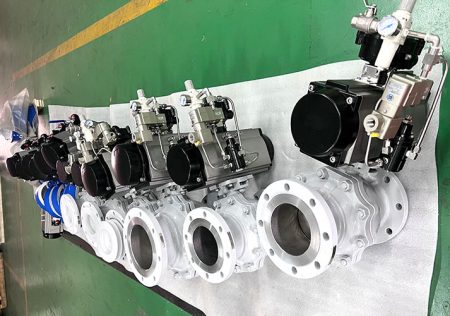
Pressure & Temperature
Engineers need to check pressure and temperature first. API 600 valves work in places with high pressure and heat. These valves handle up to 2,500 psi and 1,100°F. They are good for refineries and power plants. API 602 valves fit smaller systems with less pressure and heat. They work up to 1,500 psi and 427°C. API 600 is better for tough jobs needing strong flow control. API 602 is strong enough for smaller jobs and keeps things safe.
Space
Space is important when picking a valve. API 600 valves are big and need lots of room. Workers use them in large pipelines where space is easy to find. API 602 valves are small and fit tight places. They work well in skid packages or small units. When space is tight, API 602 valves help save room and make setup easier.
Material Compatibility
Material compatibility helps valves last longer and stay safe. API 600 valves use cast steel for many fluids and high heat. API 602 valves use forged steel to stop rust and damage. Both types have trims for special fluids. Engineers must match the valve material to the fluid. This keeps quality high and stops leaks or problems.
Cost vs. Performance
Cost matters a lot when picking a valve. API 600 valves cost more because they use more material. Their heavy design needs more time and tools to install. They work well in high-pressure and hot jobs. API 602 valves cost less for small systems. Their small size and forged steel help lower the price. The table below shows how cost and performance compare:
| Aspect | API 600 Gate Valves | API 602 Gate Valves |
|---|---|---|
| Size Range | Larger sizes (2 inches and above) | Smaller sizes (up to 4 inches) |
| Pressure Ratings | Higher pressure classes (up to Class 2500) | Moderate pressure classes (up to Class 1500) |
| Temperature Range | Higher temperature tolerance (up to 593°C / 1100°F) | Moderate temperature tolerance (up to 427°C) |
| Construction | Heavy wall thickness, bolted bonnet design | Compact design |
| Sealing Elements | Hard-faced seats, multiple stem seal options | Elastomeric or metallic seats |
| Application Scope | Critical, high-pressure, high-temperature environments | Moderate pressure and temperature applications |
API 600 valves give strong flow control but cost more. API 602 valves save money and fit small systems. Engineers must balance cost and performance for each job.
Compliance
Valve standards keep systems safe and working well. API 600 and API 602 valves must follow strict rules for design and testing. Oil and gas jobs need these standards. Engineers check that valves pass inspections and use the right materials. Some jobs need fire testing like API 607 or API 6FA. Meeting these rules keeps people safe and builds trust. Using valves that meet API standards helps companies follow laws and protect workers.
Tip: Always pick valves that meet the right standards for your job. This keeps things safe and helps avoid problems later.
Decision Steps
Picking the right gate valve takes a few simple steps. Engineers can follow this guide to help them choose the best one for their system:
Determine the Valve Size Needed
First, check the pipe size in your system. Big pipes usually need API 600 valves. These work for sizes from 2 inches up to 60 inches. Small pipes use API 602 valves, which fit ? inch to 4 inches. Make sure the valve size matches the pipe. This helps the flow stay safe and smooth.
Check the Pressure Class and Application
Next, see how much pressure the system will have. API 600 valves are good for high-pressure jobs like oil and gas pipelines. They also work in refineries with tough conditions and heat. API 602 valves can handle high pressure too. But they are better for small spaces, like steam lines or chemical plants.
Select the Right End Connection
How the valve connects to the pipe is important. API 600 valves have flanged, butt-weld, and pressure-seal ends. These are best for big factories and plants. API 602 valves give more choices. They can be threaded (NPT), socket weld, flanged, or butt-weld. These options help when pipes are small or space is tight.
Consider the Trim Type for Fluid and Temperature
The trim is the part inside the valve that touches the fluid. Engineers need to pick a trim that does not rust and can take the heat. The right trim helps the valve last longer and keeps things safe.
Balance All Factors for Final Selection
Look at the size, pressure, space, and what the valve will do. Think about all these things together. Then decide if API 600 or API 602 is best for the job. The right valve will fit the system and work well.
Tip: Always check what your system needs before you choose. The right valve keeps everything safe and working right.
The table below shows the big differences between api 600 and api 602 gate valves:
| Factor | API 600 Gate Valves | API 602 Gate Valves |
|---|---|---|
| Size Range | 2″ to 60″ | Up to 4″ |
| Materials | Cast steel | Forged or stainless steel |
| Pressure Ratings | Up to Class 2500 | Up to 1500 psi |
| Applications | Large pipelines | Compact, smaller systems |
Valve specialists can help you pick the right valve. They know how to keep things safe and working well. If a system is important, ask an expert for help. This lowers risk and makes sure things work better.
FAQ

What is the main difference between API 600 and API 602 gate valves?
API 600 valves are best for big pipelines and high pressure. API 602 valves are for small systems and tight spots. API 600 uses cast steel, while API 602 uses forged steel.
Can API 602 valves handle high temperatures?
Yes, API 602 valves can take high heat, but not as much as API 600. API 602 valves work well up to about 427°C (800°F).
Are API 600 valves more expensive than API 602 valves?
API 600 valves cost more. They are bigger, use more steel, and need more work to put in and keep working.
Where do engineers use API 602 gate valves most often?
Engineers use API 602 valves in skid packages and chemical units. These valves are good for small process systems and places with little space.
Do both API 600 and API 602 valves meet safety standards?
Both API 600 and API 602 valves follow strict safety and quality rules. The American Petroleum Institute sets these rules.
How do I choose the right valve for my system?
- Check the pipe size and how much pressure you need.
- Think about space and how you will put the valve in.
- Make sure the valve material matches the fluid.
- Look at the price and how much care it needs.
- Pick the valve that fits all these things.
Can API 602 valves replace API 600 valves in all cases?
No, API 602 valves cannot be used instead of API 600 in big pipelines or very high-pressure jobs. Each valve is made for different uses.
